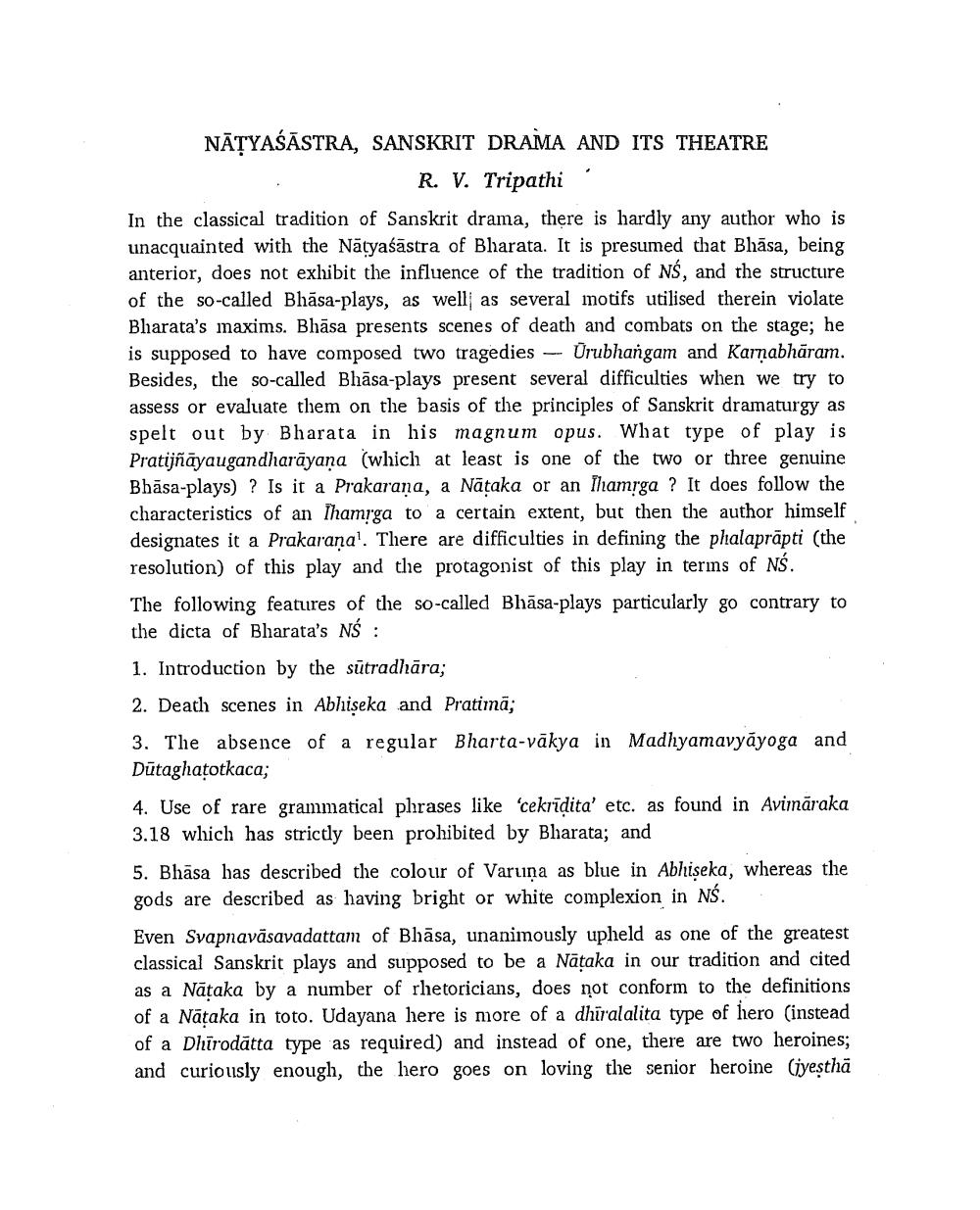Book Title: Sambodhi 1996 Vol 20 Author(s): Jitendra B Shah, N M Kansara Publisher: L D Indology Ahmedabad View full book textPage 5
________________ NĀTYAŚĀSTRA, SANSKRIT DRAMA AND ITS THEATRE R. V. Tripathi In the classical tradition of Sanskrit drama, there is hardly any author who is unacquainted with the Nātyaśāstra of Bharata. It is presumed that Bhāsa, being anterior, does not exhibit the influence of the tradition of Nś, and the structure of the so-called Bhāsa-plays, as well as several motifs utilised therein violate Bharata's maxims. Bhāsa presents scenes of death and combats on the stage; he is supposed to have composed two tragedies - Urubhangam and Karnabhāram. Besides, the so-called Bhāsa-plays present several difficulties when we try to assess or evaluate them on the basis of the principles of Sanskrit dramaturgy as spelt out by Bharata in his magnum opus. What type of play is Pratijñāyaugandharāyaṇa (which at least is one of the two or three genuine Bhāsa-plays) ? Is it a Prakarana, a Nataka or an shamrga ? It does follow the characteristics of an Thamrga to a certain extent, but then the author himself designates it a Prakarana! There are difficulties in defining the phalaprāpti (the resolution) of this play and the protagonist of this play in terms of Nś. The following features of the so-called Bhāsa-plays particularly go contrary to the dicta of Bharata's NŚ : 1. Introduction by the sūtradhāra; 2. Death scenes in Abhiseka and Pratimā; 3. The absence of a regular Bharta-vākya in Madhyamavyāyoga and Dūtaghatotkaca; 4. Use of rare grammatical phrases like 'cekrīdita' etc. as found in Avimāraka 3.18 which has strictly been prohibited by Bharata; and 5. Bhāsa has described the colour of Varuna as blue in Abhiseka, whereas the gods are described as having bright or white complexion in NS. Even Svapnaväsavadattam of Bhāsa, unanimously upheld as one of the greatest classical Sanskrit plays and supposed to be a Nataka in our tradition and cited as a Nāțaka by a number of rhetoricians, does not conform to the definitions of a Nataka in toto. Udayana here is more of a dhiralalita type of hero (instead of a Dhūrodātta type as required) and instead of one, there are two heroines; and curiously enough, the hero goes on loving the senior heroine (jyesthāPage Navigation
1 ... 3 4 5 6 7 8 9 10 11 12 13 14 15 16 17 18 19 20 21 22 23 24 25 26 27 28 29 30 31 32 33 34 35 36 37 38 39 40 41 42 43 44 45 46 47 48 49 50 51 52 ... 220
